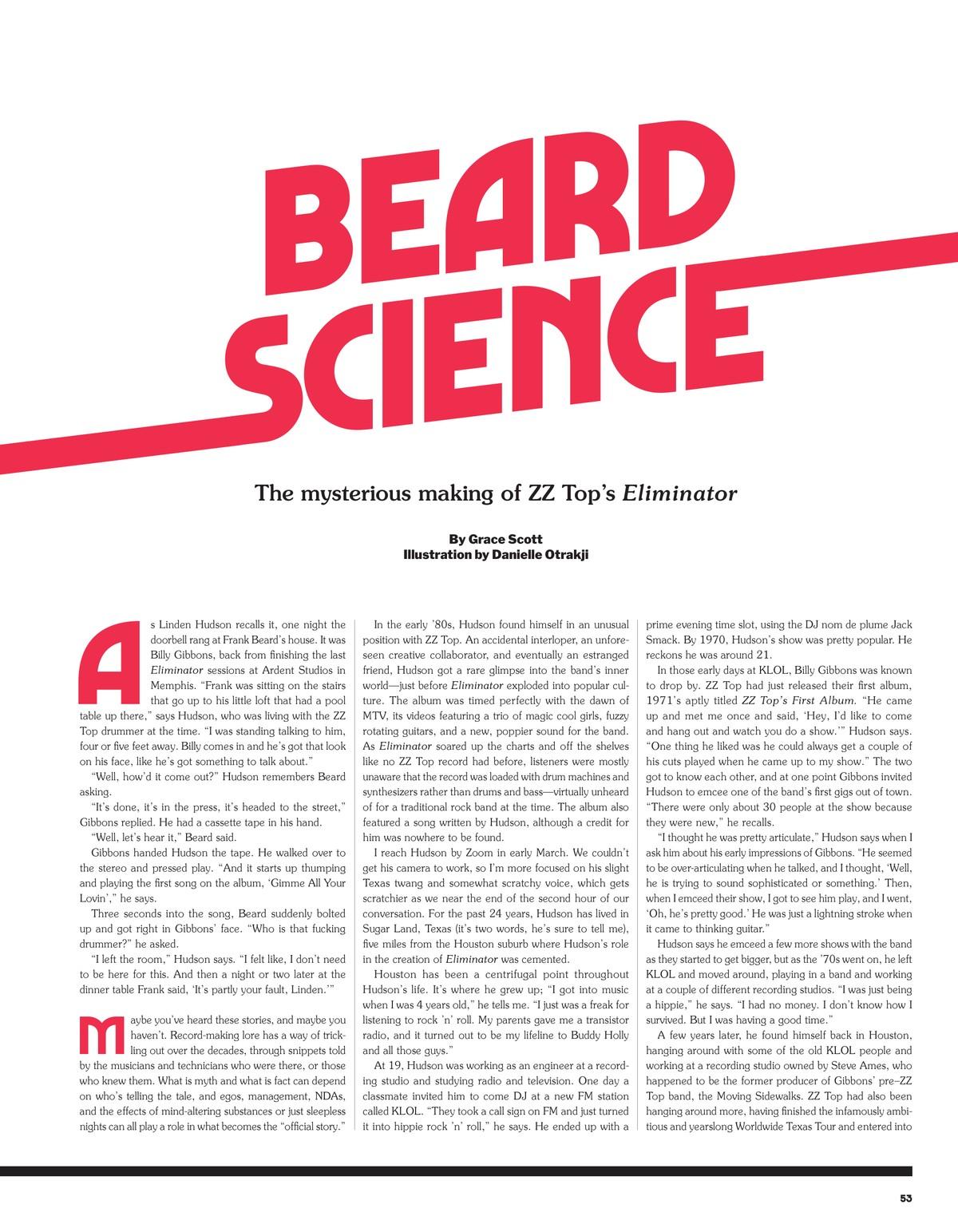BEARD SCIENCE
The mysterious making of ZZ Top’s Eliminator.


As Linden Hudson recalls it, one night the doorbell rang at Frank Beard’s house. It was Billy Gibbons, back from finishing the last Eliminator sessions at Ardent Studios in Memphis. “Frank was sitting on the stairs that go up to his little loft that had a pool table up there,” says Hudson, who was living with the ZZ Top drummer at the time. “1 was standing talking to him, four or five feet away. Billy comes in and he’s got that look on his face, like he’s got something to talk about.”
“Well, how’d it come out?” Hudson remembers Beard asking.
“It’s done, it’s in the press, it’s headed to the street,” Gibbons replied. He had a cassette tape in his hand.
“Well, let’s hear it,” Beard said.
Gibbons handed Hudson the tape. He walked over to the stereo and pressed play. “And it starts up thumping and playing the first song on the album, ‘Gimme All Your Lovin’,” he says.
Three seconds into the song, Beard suddenly bolted up and got right in Gibbons’ face. “Who is that fucking drummer?” he asked.

